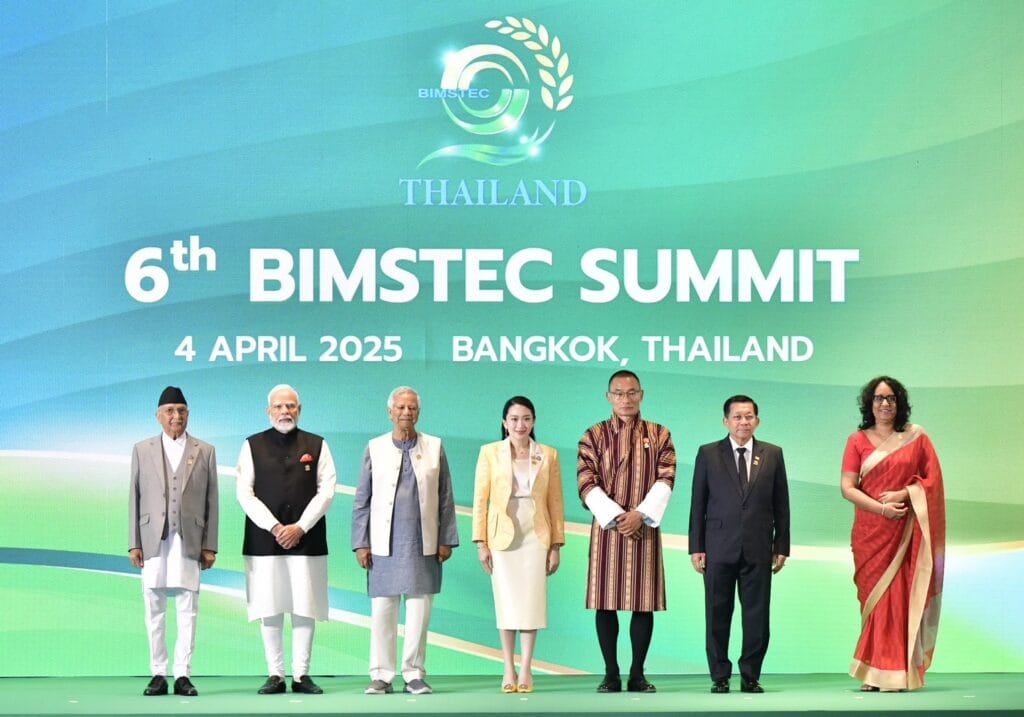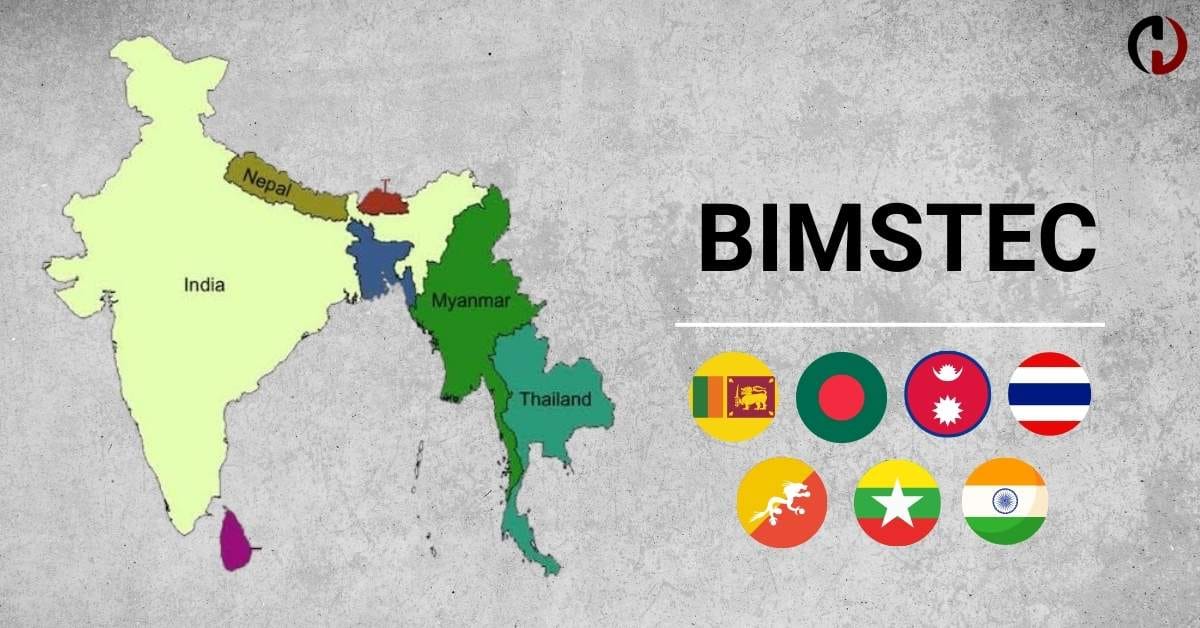The South Asian Association for Regional Cooperation (SAARC) has a long history of being undermined by political tensions and especially the ongoing strife between India and Pakistan that basically keeps it from being effective. That’s a piece of longstanding and recurring bad news for the organisation. The Bay of Bengal Initiative for Multi-Sectoral Technical and Economic Cooperation (BIMSTEC) represents an exceptional opportunity for pan-regional integration across the Bay of Bengal through its multi-disciplinary technical and economic cooperation framework. The analysis discusses BIMSTEC’s historical transformation while exploring its structural benefits as well as India’s leadership position and examines its current obstacles towards becoming the fundamental element of Indo-Pacific regional establishment.
Introduction
The proper association between nations is vital for both economic progress and peace maintenance together with stability across South Asia’s complicated geopolitical landscape. The SAARC organisation was supposed to function as an exceptional platform for South Asian nations to cooperate together in the long term. But it keeps getting stymied by all the political hurdles, and there’s no getting over the stubborn relationship gap between India and Pakistan that makes a handshake and warm interaction practically impossible.
With the framework of SAARC broken and not functioning smoothly, we’ve really seen that BIMSTEC has taken on the mantle and really taken off as the more practical solution for integration of South and Southeast Asia. It approaches things in a flexible and sector specific way that groups economies together which before really hadn’t always been as fluid or compatible together.
The April 2025 BIMSTEC Summit

The 6th BIMSTEC Summit took place throughout 2-4 April, 2025 within the city of Bangkok Thailand where it brought about transformative changes for the organisation. Through its role as chair during 2022-2025 Thailand headed the summit to enable member states to strengthen their dedication for regional collaboration toward mutual development.
The summit produced two vital documents which were the BIMSTEC Bangkok Vision 2030 alongside The BIMSTEC Eminent Persons’ Group Report. The group uses these documents to establish future directions about strengthening member states’ connectivity initiatives and creating trade networks and energy cooperation systems as well as disaster prevention capabilities. The BIMSTEC Summit Declaration put forward strategic guidelines for strengthening economic integration and developing sustainable projects and promoting peace and security initiatives across the Bay of Bengal region.
During the summit leaders made maritime cooperation into a priority which aims to develop Bay of Bengal trade routes as well as secure energy operations and expand its regional connectivity. The leaders discussed ways to enhance regional resilience against natural disasters that face member states after the powerful earthquake that struck Myanmar and Thailand.
Also Read: Japan’s Soft Power: Ghibli Art, a Part of Their Cultural Diplomacy
Why SAARC Faltered: Political Constraints and Institutional Weaknesses
Founded in 1985, SAARC was supposed to boost South Asian regional integration in trade, economics, and culture. Sadly, its potential was always stunted due to poor Indo-Pak relations and incessant wars. The ongoing Indian-Pakistani hostilities would result in many summits being cancelled or delayed over and over again. This inability to move away from bilateral issues resulted in severe stagnation of SAARC and rendered it useless. BIMSTEC, on the other hand, was designed in a way that sidesteps all political constraints and focuses on sectoral non-political collaborations. While technologies like trade, infrastructure, power, etc, were able to be taken up practically due to the absence of heated Indo-Pak bilateral relations, BIMSTEC was able to pursue its goals.
BIMSTEC’s Structural Strengths: Functional and Flexible Cooperation
BIMSTEC emerged through seven member states that established their foundation in 1997 including Bangladesh, Bhutan and India alongside Myanmar, Nepal and Sri Lanka and Thailand. The open governing model of BIMSTEC differentiates it from SAARC. BIMSTEC manages diverse issues within 14 priority sectors which include trade and technology as well as energy and climate change management and fisheries development and public health and disaster management. The inclusive scope of their mandate enables member countries to participate in useful joint activities regardless of political alliances.
BIMSTEC stands out because it relies on a decentralized approach for making decisions. The member countries individually assume leadership roles over different sectors to develop priorities which address domestic requirements and regional priorities. The decentralized structure produces more practical solutions that produce tangible outcomes instead of restrictive consensus methods that typify other regional bodies.
JOIN US ON: X(Twitter), LinkedIn, Instagram, Facebook, Whatsapp
India’s Leadership: Enhancing Connectivity and Countering Geopolitical Rivalries
India maintains its central strength through the development path of BIMSTEC. The membership of BIMSTEC allows India to enhance its “Neighbourhood First” and “Act East” diplomatic frameworks because the organisation hosts India’s biggest economic weight and biggest resident population. India’s leadership role in BIMSTEC energized the organisation to develop the India-Myanmar-Thailand Trilateral Highway for enhancing trade networks between India and Thailand and Myanmar.

Through BIMSTEC India exercises its strategic power against Chinese regional dominance by establishing maritime defence programmes while building economic resilience in Southeast Asia. BIMSTEC’s development depends significantly on India’s ability to lead energy collaborations and digital convergence and security programmes with the result that India becomes the primary organisation transformation agent.
Maritime Cooperation and Economic Integration
The Bay of Bengal serves as a vital shipping route for regional business while offering unexplored opportunities within its waters for fisheries activities and maritime transport industries as well as energy sector development. BIMSTEC uses maritime cooperation frameworks that support coastal shipping and develop ports and establish integrated trade paths to maximize Bay of Bengal’s commercial prospects. The region’s maritime projects support ongoing trends toward blue economy development because they uphold ocean economic potential with sustainable practices.
The Bay of Bengal Initiative for Multi-Sectoral Technical and Economic Cooperation demonstrates economic integration commitment by working together to establish both the BIMSTEC Free Trade Area (FTA) and a regional energy grid. The region’s economic development depends on these initiatives because they open opportunities to release the economic energy while strengthening relationships between member states.
Also Read: Balochistan: A Land of Riches, Betrayal and Resistance
Challenges Ahead: Institutional Weaknesses and Political Fragmentation
BIMSTEC maintains substantial obstacles to reach its objectives. The essential problem facing BIMSTEC consists of its insufficient institutional capabilities. Because of its current structure it fails to maintain an effective central secretariat which delivers decision implementation and project coordination across member states. The organisation experiences constant postponements in activities together with insufficient commitment to maintain completed projects.
The political conditions in Myanmar create instability throughout the region because the military rules the country which leads to worries about regional stability. BIMSTEC successfully avoids some major disputes that troubled SAARC while members remain preoccupied about regional tensions between India and neighboring countries.
Conclusion: BIMSTEC’s Potential for the Future
The BIMSTEC framework presents South and Southeast Asia with their key chance to develop regional collaboration. The emphasis on real-world sectoral partnerships within BIMSTEC creates essential integration channels after the failure of SAARC. The April 2025 Summit produced outcomes which established BIMSTEC’s capacity to stimulate economic expansion and strengthen connections together with disaster preparedness enhancement.
For BIMSTEC to establish sustainable success it needs to conquer institutional capacity and political fragmentation obstacles inside the bloc. The Indo-Pacific regional order will gain a central member through BIMSTEC when its members strengthen their cooperation efforts across infrastructure projects, trade agreements and maritime safety measures.
By maintaining the current growth trajectory and strengthening its organisational structure The Bay of Bengal Initiative for Multi-Sectoral Technical and Economic Cooperation has the opportunity to replace SAARC and function as an essential foundation for Indo-Pacific regional unification.
About the Author: Maharnab Kashyap is currently an undergraduate student in the Department of Electrical Engineering at Jorhat Engineering College, Jorhat, Assam, is an avid reader with a keen interest in quizzing, sports, cinema, and international relations. Views are personal. Contact: kashyapmaha18@gmail.com.




